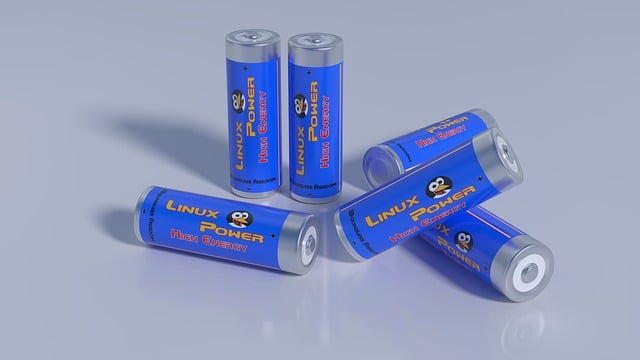improper battery disposal significantly harms the environment by releasing toxic substances like lead, mercury, cadmium, and lithium into ecosystems. These hazardous materials cause long-term ecological disruption and health risks through pollution. To mitigate this, it's essential for consumers and industries to adopt sustainable practices when replacing batteries, including active participation in recycling programs that recover valuable materials safely. Responsible battery disposal and recycling are key to preventing environmental damage and ensuring a sustainable future. The article emphasizes public awareness as a cornerstone of effective recycling and advocates for accessible collection points and advanced processing facilities. It also discusses the transition to sustainable energy storage solutions, highlighting innovative materials that improve battery performance with less environmental impact. New battery technologies like lithium-sulfur and sodium-ion batteries use more abundant materials, addressing concerns over conflict minerals and end-of-life disposal issues. The development of solid-state batteries with environmentally friendly components is a focus area, aiming to enhance safety, increase longevity, and facilitate recycling. Policymakers are enacting international regulations that establish regional frameworks for responsible battery replacement and disposal, encouraging collaboration across industries to minimize environmental harm. These regulations promote a circular economy by setting benchmarks for sustainable recycling practices and ensuring the protection of ecosystems from toxic substances found in batteries. Keywords: replace battery, environmental impact, end-of-life management, take-back systems, recycling facilities, circular economy, sustainable resource management.
Addressing the pressing issue of battery disposal and its environmental repercussions, this article delves into the critical strategies for mitigating the impact. It explores the necessity for responsible battery replacement and disposal, emphasizing innovative materials in sustainable design. Through a comprehensive examination of policy frameworks and regulations, the article provides insights into how these can be optimized to ensure environmental protection. Understanding the consequences of improper disposal is paramount, as it underscores the importance of proactive measures to safeguard our ecosystems. Join us as we explore solutions for a greener future in battery management and recycling.
- Understanding the Environmental Consequences of Improper Battery Disposal
- Strategies for Effective Battery Recycling Programs
- The Role of Innovative Materials in Sustainable Battery Design
- Policy Frameworks and Regulations for Responsible Battery Replacement and Disposal
Understanding the Environmental Consequences of Improper Battery Disposal

The improper disposal of batteries poses significant environmental risks, with a host of adverse consequences that underscore the importance of responsible replacement and recycling practices. When batteries are disposed of in landfills or incinerators, hazardous substances like lead, mercury, cadmium, and lithium can leach into soil and water systems, leading to pollution and ecosystem damage. These substances are not only toxic but also persistent, meaning they can accumulate in the environment over time, affecting both wildlife and human health. The disposal of batteries contributes to soil and water contamination, which can disrupt ecological balance, affect biodiversity, and pose health risks through the food chain. It is imperative for consumers and industries alike to adopt sustainable practices for battery replacement and to utilize established recycling programs that safely recover materials from used batteries, thereby mitigating the environmental impact. By replacing batteries responsibly and participating in recycling initiatives, we can prevent these substances from entering the environment, ensuring a safer and more sustainable future.
Strategies for Effective Battery Recycling Programs

Replacing batteries responsibly is a critical step in mitigating their environmental impact. Effective battery recycling programs hinge on a combination of public awareness, convenient collection points, and efficient processing facilities. Educational campaigns can inform consumers about the importance of proper battery disposal and the negative consequences of improper disposal on local ecosystems. These campaigns should highlight the recyclability of batteries, which not only conserves natural resources but also prevents hazardous substances from contaminating soil and water sources.
To enhance battery recycling efforts, establishing accessible collection points is essential. These can be found at retail stores, electronic waste centers, and municipal facilities. The convenience of these drop-off locations increases the likelihood that individuals will participate in recycling programs. Once collected, batteries are transported to specialized processing plants where they are carefully disassembled and their components are recovered for reuse. Advanced technologies employed at these facilities can separate and extract valuable metals like lithium, cobalt, nickel, and copper, which can then be repurposed in new battery production. This closed-loop system not only minimizes environmental harm but also supports the sustainability of the battery industry. Implementing such strategies is paramount to ensure that replacing batteries contributes positively to environmental conservation.
The Role of Innovative Materials in Sustainable Battery Design

The shift towards sustainable energy storage has propelled the exploration of innovative materials in the design of batteries, which are integral to a multitude of electronic devices. These novel materials not only offer enhanced performance but also present opportunities to minimize environmental impact upon disposal. For instance, the use of lithium-ion batteries has been under scrutiny due to their reliance on rare and potentially conflict-mineral-laden materials, as well as their end-of-life challenges. The development of alternative chemistries, such as lithium-sulfur or sodium-ion batteries, aims to circumvent these issues by leveraging more abundant elements and reducing the environmental footprint. Additionally, advancements in solid-state battery technology promise to replace traditional liquid electrolytes with solid materials, which could enhance safety and longevity while also being more conducive to recycling processes. The integration of environmentally benign components like biodegradable separators or organic electrodes is another area of focus, as these can significantly improve the eco-profile of batteries at their end of life. The replacement of traditional battery components with these innovative materials heralds a new era in sustainable energy storage, aligning economic and environmental objectives while ensuring the longevity of our planet’s health.
Policy Frameworks and Regulations for Responsible Battery Replacement and Disposal

The environmental impact of improper battery disposal is a pressing concern as the demand for electronic devices continues to rise. To mitigate this issue, a robust policy framework is essential within each region to facilitate responsible battery replacement and disposal. Governments worldwide have established regulations that dictate the proper handling of batteries at their end-of-life. These policies often mandate the design and financing of take-back systems, ensuring that consumers can replace batteries responsibly without incurring excessive costs. Such systems typically involve partnerships between manufacturers, retailers, and waste management companies to collect and recycle batteries properly, reducing the environmental footprint associated with their disposal. The regulations also set forth criteria for recycling facilities, which must adhere to stringent environmental and safety standards to process batteries in an eco-friendly manner. By implementing these frameworks and continuously updating them to reflect technological advancements, policymakers can promote a circular economy where batteries are not only replaced with greater efficiency but also disposed of in a way that minimizes harm to the environment. This proactive approach not only safeguards ecosystems from the hazardous substances contained within batteries but also supports sustainable resource management for the future.
In addressing the environmental impact of batteries, this article has delineated the critical importance of sustainable disposal practices and innovative design. The consequences of improper battery disposal are far-reaching, underscored by the need for comprehensive recycling strategies. Through the exploration of effective battery recycling programs, it’s evident that both individual responsibility and systemic change are paramount to mitigate environmental harm. Moreover, the potential of novel materials in sustainable battery design offers a pathway towards more eco-friendly energy solutions. The establishment of robust policy frameworks and regulations for responsible battery replacement and disposal is essential to ensure the longevity of our planet’s health. It is through concerted efforts across all sectors—from manufacturers to consumers—that we can effectively manage the lifecycle of batteries and minimize their ecological footprint.
